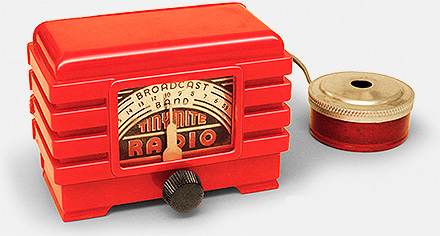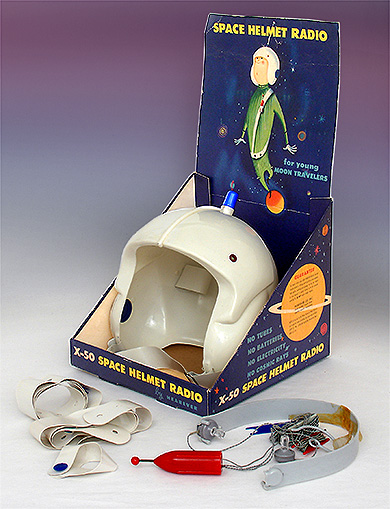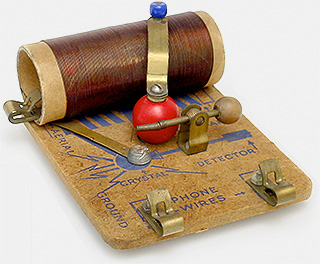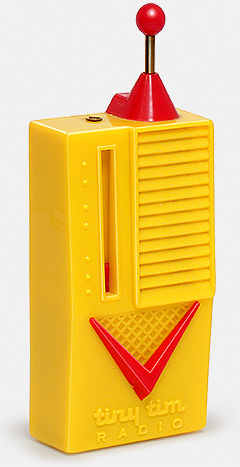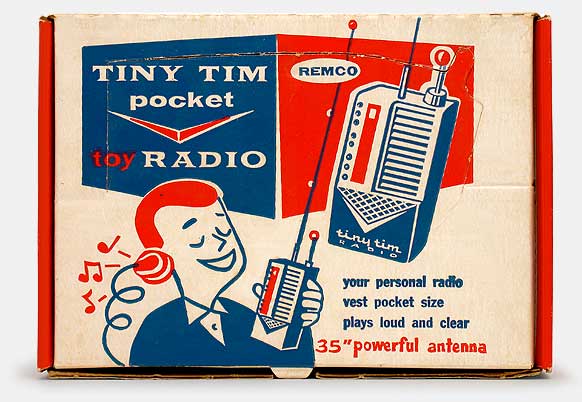Crystal Radios
Crystal radios were the first radios. They use no batteries or other power to receive stations; they are powered by the faint signals from the broadcasting stations themselves and can be heard only through earphones. Beginning in the 1920s, amplifiers were added to radios to make them loud enough to power speakers and those early, serious-looking crystal radios faded into history.
But as you see on this page, the crystal radio managed to survive in the form of a toy. Many a kid has been fascinated by these little radios, some of us even built our own.
The beautiful red Tinymite you see here is from the prolific Western Manufacturing of Kearney, Nebraska (1949) who sold their wares through little mail-order ads in popular and hobbyist magazines. They made a lot of interesting crystal radios and some tube and transistor radios too. They even made some walkie-talkies. You don’t see this X-50 Space Helmet Radio every day, now do you? Man! It’s “For Young Moon Travelers” and it’s from Hearever (USA). Very few of these were made.
The radio that looks like it was assembled on a board is what's known as a breadboard-style radio. This one has a “cat’s whisker” crystal and is a commercially-made Easy Built Radio Kit (1945) from Da-Myco Products, New York, USA. For more on these delightful little radios, see my books, Toy Crystal Radios Volume 1 and Volume 2.
The yellow one here is a Remco Tiny Tim, made in the USA in 1959. The box for it is shown below.
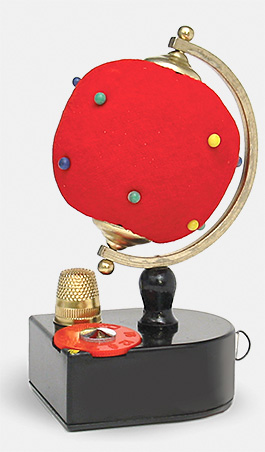
And here’s the goofy Current NP-81 Pincushion Radio. It’s not only a radio, it’s also an actual pincushion stuck with real pins, and it has a thimble and built-in retractable tape measure you can see peeking out on the right.
The low technology of the crystal radio and the high technology of space travel somehow made a potent combination. There were many toy crystal radios made with space themes, especially in that late-’50s to late-’60s decade that culminated in Neil Armstrong’s walk on the moon. This Miniman MG-305 (Japan) shown here is one of the many rocket-shaped crystal radios made during that time by many different makers.
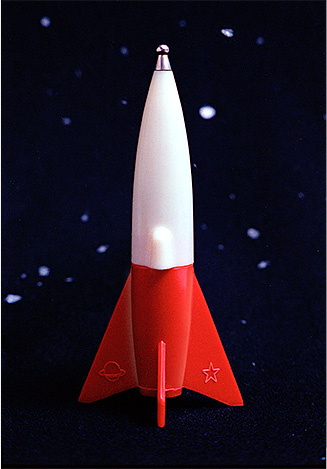
As you can see, collecting crystal radios is obviously fun. And if you like showing things off to unsuspecting visitors, very few collectibles elicit smiles as easily as crystal radios. They're beautiful and curious and fun and sort of techie all at once!
And here's a “crystal diode,” an early ’50s Sylvania 1N34A germanium diode to be exact. Sealed crystal diodes like this replaced the old open cat’s whisker in the 1950s.

